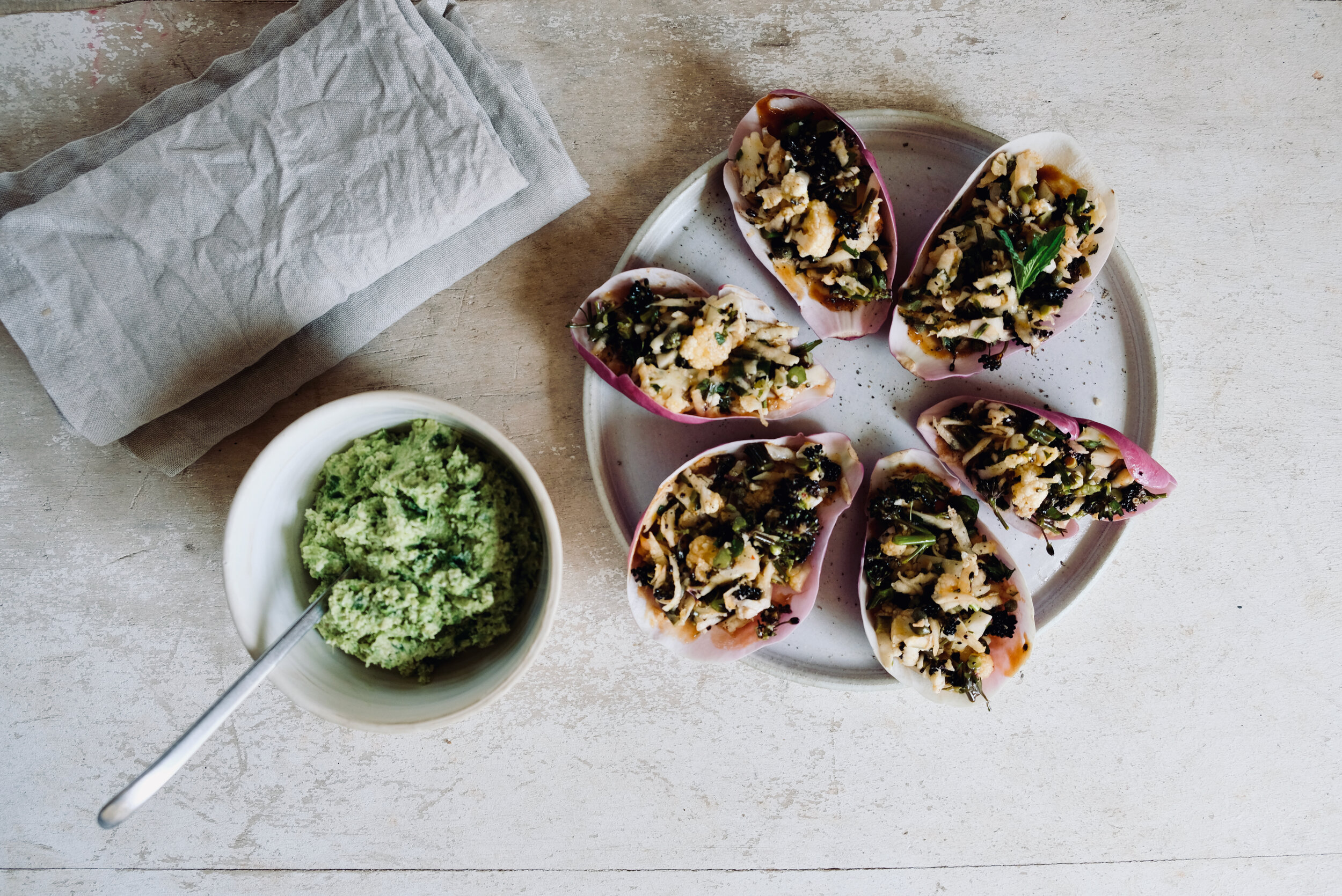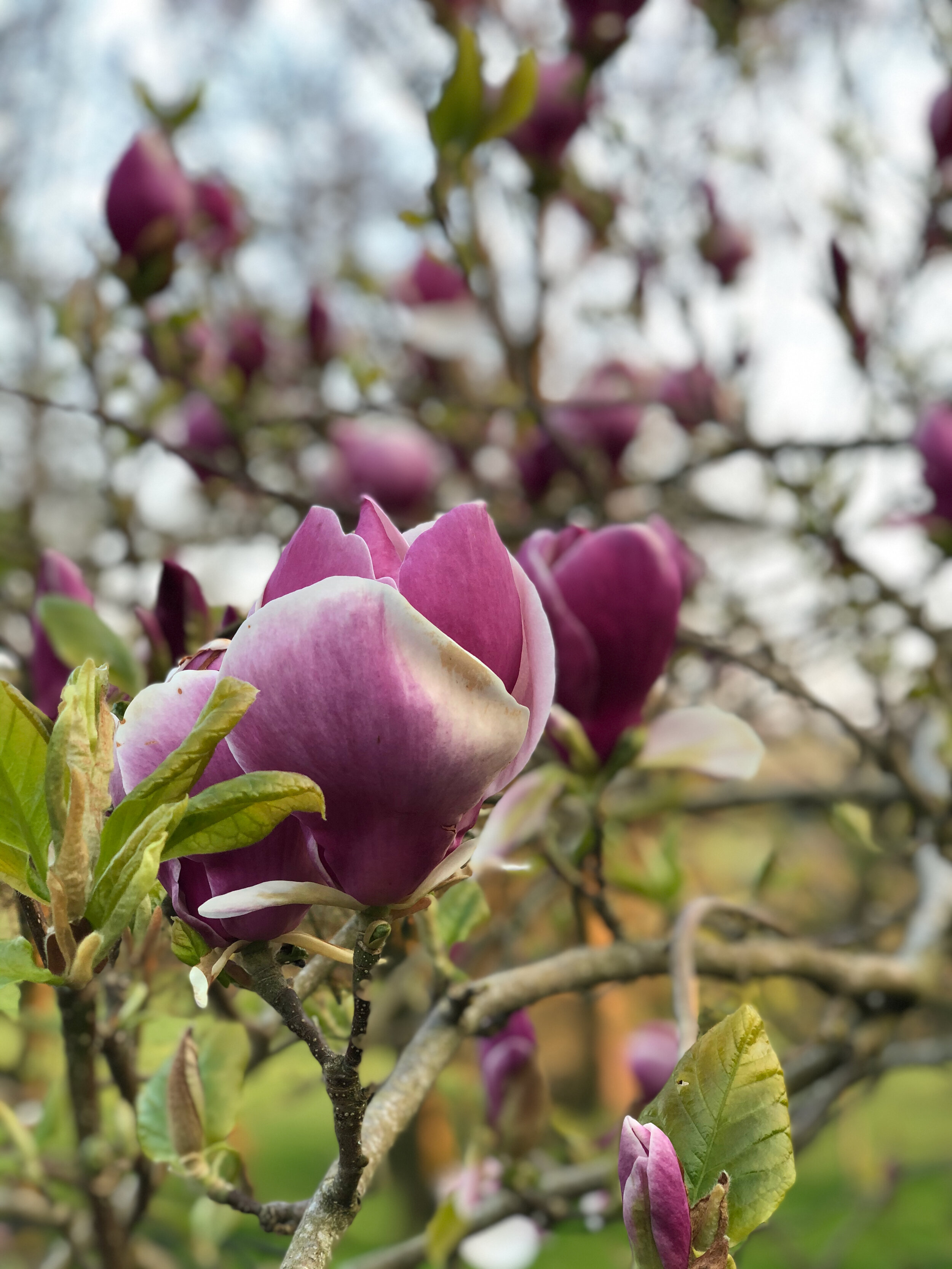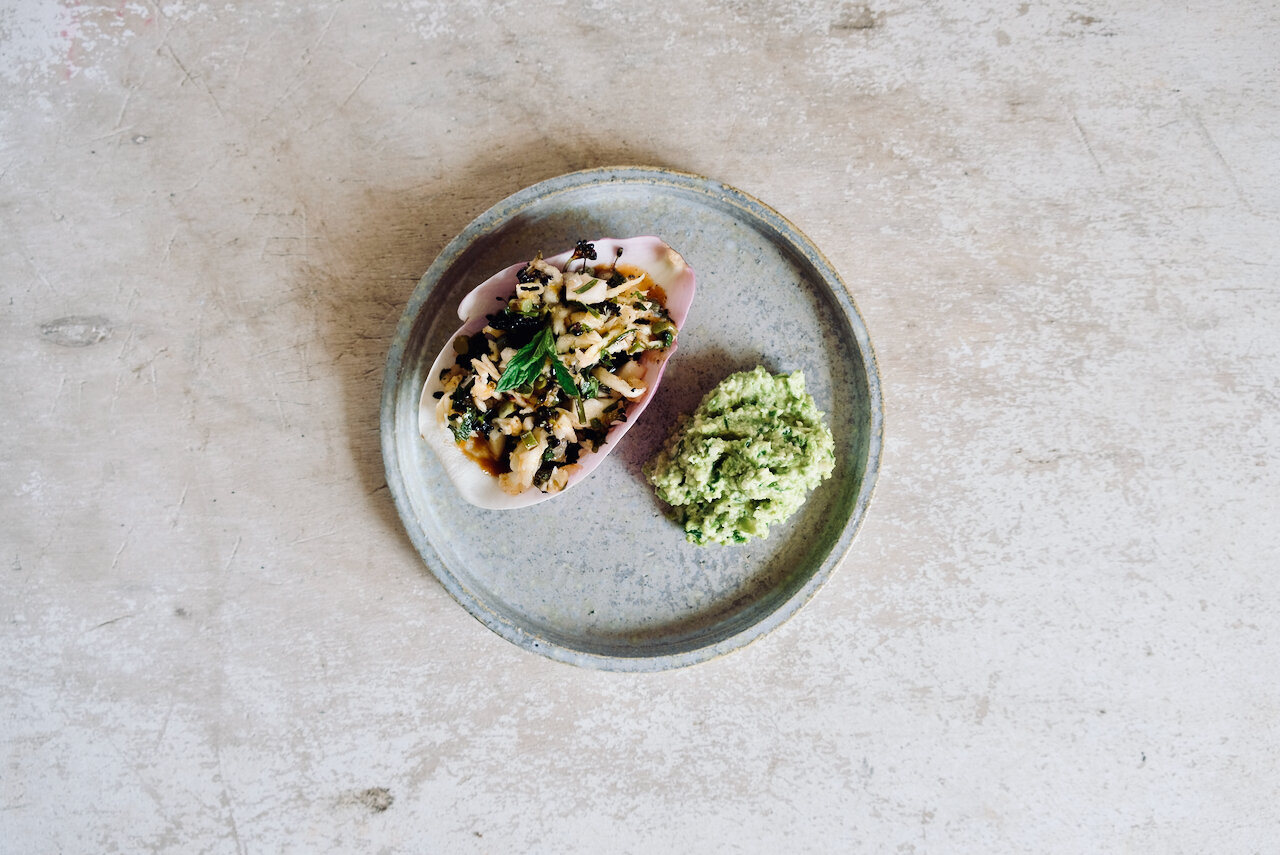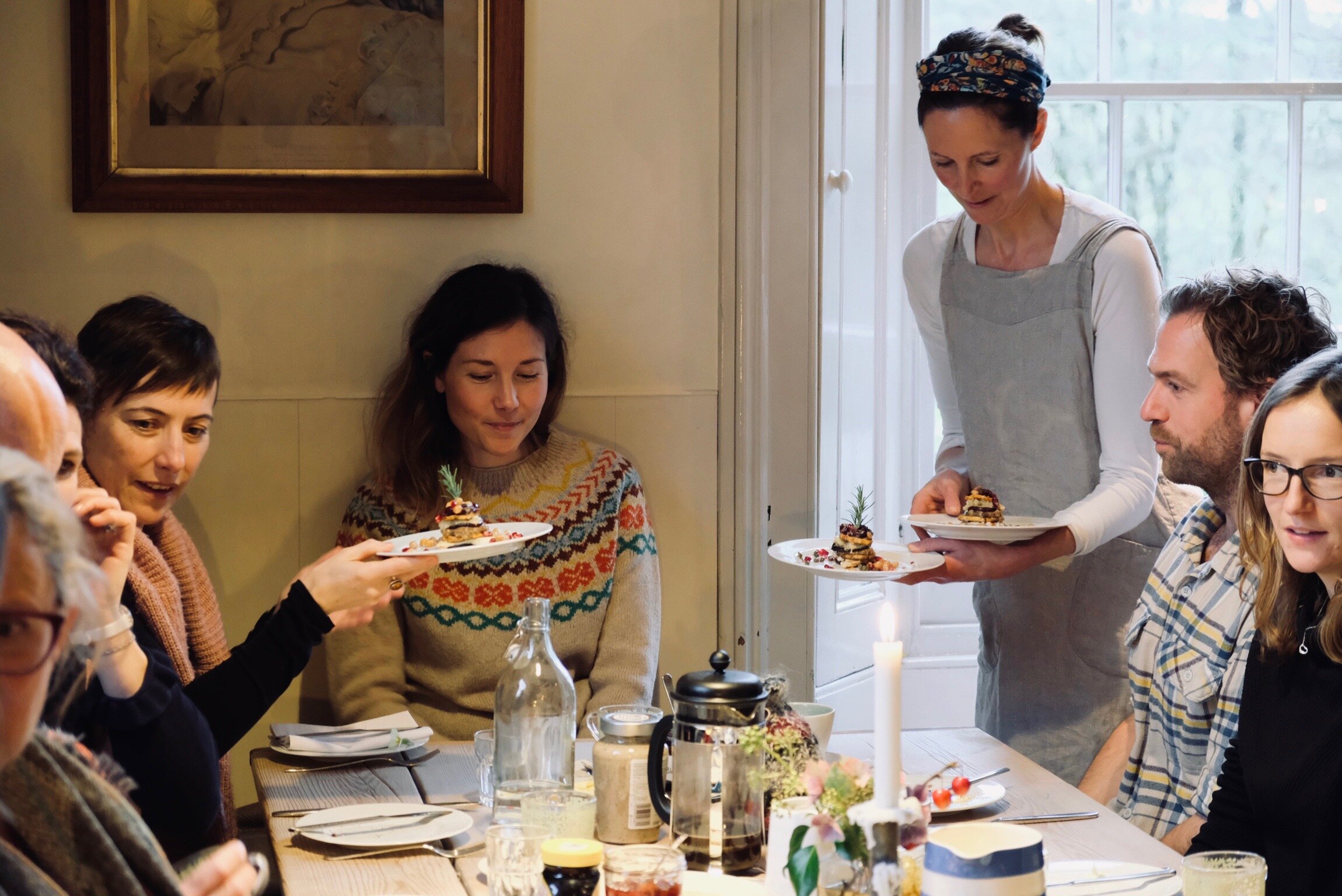How do you want your festive food to make you feel? I’m excited to get stuck into those seasonal flavours and textures that speak of Christmas - the sweetness of maple roasted parsnips, the nutty base notes of stuffing (mine’s a veggie version please), the delicate bite of a perfectly cooked sprout, and who can resist a roast potato or three? Not me.
But what I don’t want to feel is overly full, so stuffed that my body takes the next three hours processing what I’ve eaten, and the thought of heaving myself off the sofa to play games with the kids is like punishment. That, and I definitely want to have space for plenty of snacking later into the evening. So this little recipe is designed with that in mind - bringing together some of the best flavours of Christmas - but in a fun and potentially not-too-filling way.
The recipe is all about adaptation: choose flavours that you and your family love the most, and use these between layers of root vegetables; build your stack around the leftovers you have; and make it a heartier meal by presenting your stack as the centrepiece of individual plated portions then offer as many trimmings as you’d like in sharing bowls on the table.
As someone who turned vegetarian aged eight I haven’t eaten many meaty Christmas dinners, and I’ve never been a fan of a nut roast (may be something to do with turning veggie in the 80’s when the average nut roast offering was pretty bland and dry). But I still love Christmastime food - for the flavours, textures and colours of all the plant-based seasonal offerings that are brought to the table. So this recipe is a celebration of our winter vegetables - for me, the true heroes of the season.
The recipe detailed below was served as the cooked dish at our Festive Botelet Breakfast Club - but there are so many ways to vary it, see adaptation notes below and improvise as works for you. I am the queen of simple cooking and at first glance could be put off by the list of ingredients - but these are just suggestions and you can simplify it hugely by using up what you already have on the go.
I’d love to know how you find the recipe, and do share any delicious changes you make in the comments box below. Happy Christmas cooking!
Tia x
Festive Vegetable Stack with Lemon Braised Chickpeas and Spicy Tahini Sauce
This recipe is based on a root vegetable stack (I’ve used beetroot and sweet potato) with layers of festive fillings going between each layer of root vegetable as you build the stack. For this recipe I have used as the fillings chestnut and mushroom paste, halloumi, maple parsnip mash and cranberry sauce. I’ve topped the vegetable stack with a lightly spiced tahini sauce to drizzle on top, then lemon braised chickpeas and capers along with pomegranate seeds to scatter over the plate. You will find there are leftovers from the fillings - pop these on the table in bowls for people to dip into, or into the fridge for your next meal.
Serves 4
Ingredients:
2 x large beetroot, peeled and thinly sliced into circles (approx 1/2cm), cutting at least 10 decent-sized circles in total. Where the circles become very small, the ends can be diced and roasted to use another time..
3 x medium parsnips, washed and cut into bite-size pieces
2 tbsp maple syrup
Splash of almond milk
1 x packet halloumi (I used goathalloumi from Polmarkyn Farm that’s local to us)
Large handful pomegranate seeds
4 x rosemary sprigs (for decoration) plus extra rosemary for cooking the beetroot and sweet potato with
Olive oil
Salt & pepper
For the chestnut & mushroom paste
125g chestnuts, removed from shell (can use frozen chestnuts)
3 tbsp olive oil
1 small onion, diced
1 garlic clove, finely chopped
250g mushrooms, washed & chopped
2 tbsp thyme
1 tbsp balsamic vinegar
1 tbsp tamari sauce
4 tbsp coconut milk
4 sun-dried tomatoes, chopped
Salt & pepper
For the cranberry sauce
For the lemon braised chickpeas & capers
For the tahini sauce (adapted from a Deliciously Ella recipe)
Method:
The chestnut and mushroom paste, tahini and cranberry sauces can be made ahead and refrigerated. You could also prepare the vegetables - sweet potato, beetroot and parsnips - so they are washed, cut up and ready to be cooked.
Heat the oven to 180 C.
Take a couple of baking sheets, drizzle with olive oil then lay the circles of sweet potato and beetroot flat onto the baking trays. Add another drizzle of olive oil, lay some rosemary sprigs on top, season with salt and pepper and place in the oven. After approx 20 minutes turn them over and repeat on the other side. You want them to be cooked but not over-cooked. Remove from oven when ready.
To make the maple parsnip mash: place diced parsnip in a pan, cover with boiling water and simmer for approx 20 minutes, until softened. Remove from heat, add 2 tbsp olive oil, 2 tbsp maple syrup along with salt and pepper and a splash of almond milk, and mash. I like to do this quite roughly, so the mash maintains some texture. If you are making the parsnips ahead, on the day of cooking put the mash in a pan with another splash of almond milk and a spoon of coconut oil and heat through before serving.
To make the chestnut and mushroom paste: roast the chestnuts for approx 25 minutes until they are tender. Allow to cool a little then roughly chop them. Heat olive oil in a frying pan and sauté onion until just starting to brown. Add garlic, mushrooms, thyme and the chestnuts, cook on a low heat for approx 15 minutes. Add balsamic vinegar, tamari and sun-dried tomatoes for the last few minutes of cooking. Place all in a blender along with coconut milk and blend until a coarse paste forms. If making ahead, warm through in a pan before serving.
To make the cranberry sauce: place the orange juice and coconut sugar in a pan and simmer until sugar dissolves. Add the cranberries and bay leaf and simmer for approx 10 mins, there should still be a little liquid left around the cranberries. Take off the heat and remove the bay leaf.
To make the tahini sauce: combine all of the ingredients in a bowl and mix until smooth. Add enough almond milk so that the sauce will drizzle over your vegetable stack.
To make the braised lemon chickpeas and capers: fry the shallot until starting to brown, approx 5 minutes. Add the chickpeas and lemon rind, cook for a further 3 minutes. Add the capers and lemon juice, stir and cook for a further minute before removing from the heat.
For the halloumi: cut into slices approx 1cm thick. Place in frying pan and cook until lightly browned each side. Remove from heat. If you are preparing the halloumi before you’re ready to serve, place the lightly browned halloumi slices in a baking tray, add a drizzle of olive oil and squeeze of lemon juice, place foil on top and pop in a warming oven at a low heat.
If you have made any of the fillings in advance, remove them from the refrigerator in good time so that they are at room temperature before serving, or quickly heat through before adding to the stack.
To assemble: place one beetroot/sweet potato circle on each plate. Add a slice of halloumi, then another beetroot/sweet potato circle on top (I like to alternate between the root veg). Add approx 1 tbsp chestnut and mushroom paste, then top with another beetroot/sweet potato circle. Add approx 1 tbsp parsnip mash, then another beetroot/sweet potato circle. Add approx 1 tbsp cranberry sauce, then complete the stack with a final beetroot/sweet potato circle. Drizzle tahini sauce on top, use approx 1 tbsp per person of the braised chickpeas and capers to scatter over the stack and the plate, and do the same with some pomegranate seeds to add a burst of colour. Place a rosemary sprig at the top of each stack, gently pushing it in to hold it in place.
Adaptation notes:
I have chosen to use sweet potato and beetroot, but other root vegetables such as celeriac would work well. I was cautious not to over-do the flavours on the plate, so stuck with two root vegetables, alternating the layers of each type as I built up the stack.
With the root vegetable layers, you want to use circles of a decent size to hold enough filling between the layers. However, I cut up the whole of each vegetable (the larger middle parts of the vegetables into circles, and the smaller outer ends diced) and roast all parts together, then either serve the roasted ‘ends’ of the vegetables in a serving bowl to accompany the meal, or keep them in the fridge to use the next day.
If you or someone you are cooking for doesn’t like any chilli in food, simply leave it out of the tahini sauce.
For a vegan version, swap halloumi for tofu, or simply change it up for a different layer of vegetables (red cabbage? lightly mashed sprouts?) . I also love this recipe with finely chopped sun-dried tomatoes making up one of the fillings.
This is a great leftovers recipe - without having to plan and prepare any of the fillings, simply roast some root vegetable layers to make the stack, and create the filling layers out of any leftovers that you have - vegetables, stuffing etc. For the sauce, you could use a vegetarian gravy, bread sauce - do improvise! I’ve suggested an order for the fillings based on putting the most robust ones nearer the bottom of the stack, but again this just a suggestion. I’m a big believer that one element of reducing our collective food waste is being a bit more inventive in how we approach recipes - what adaptations can we make to use up rather than always buy in more?
The sweet potato and beetroot peelings can be drizzled with olive oil, salt and pepper and roasted for approx 20 minutes to make some vegetable crisps - a lovely festive snack. Wash the vegetables first before peeling.
Ideas for using up the left over fillings: the chestnut and mushroom paste is great on toast; the tahini sauce taste wonderfully aromatic mixed into stir-fried vegetables at the last moment; the lemon chickpeas and capers make a lovely topping for a leafy salad along with any left over roasted vegetable ends; and the cranberry sauce (warmed or cold) makes for a delicious accompaniment to most vegetarian meals!












